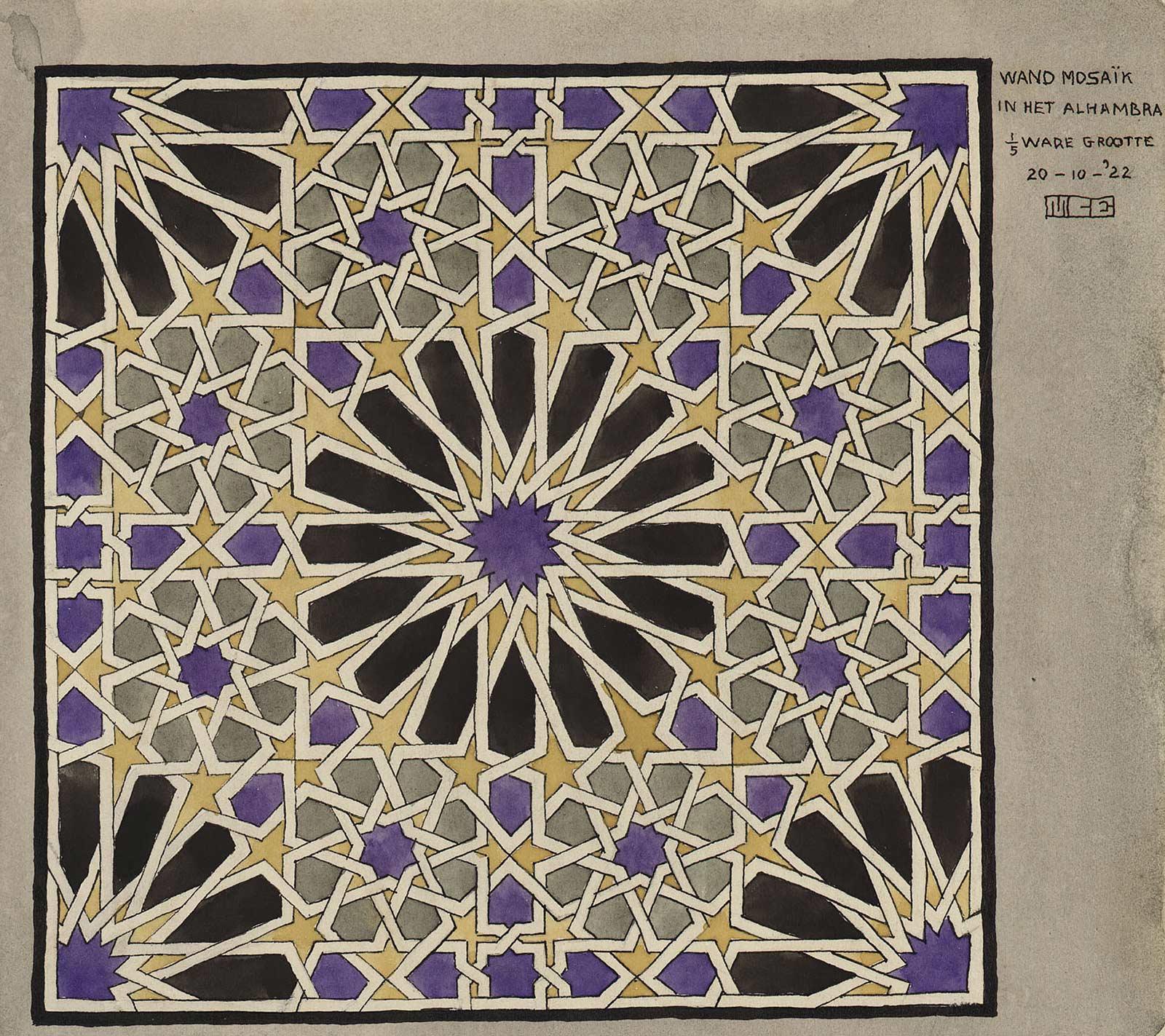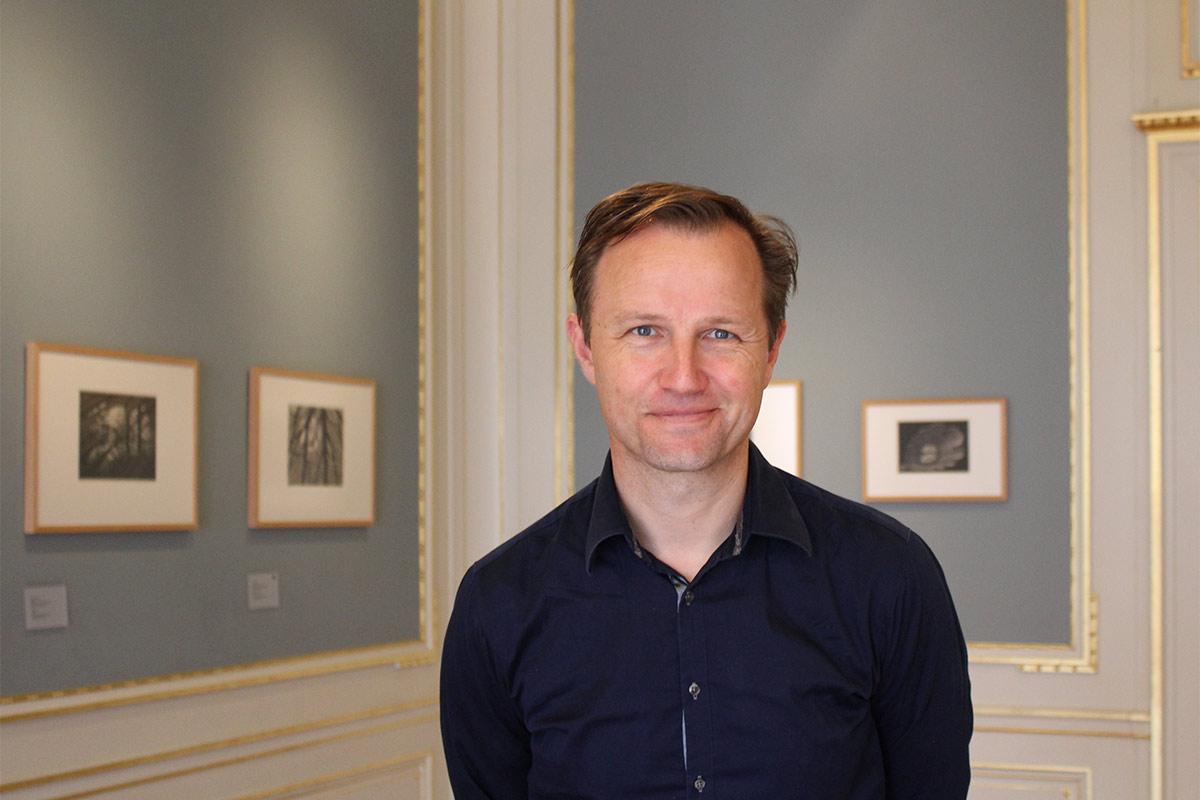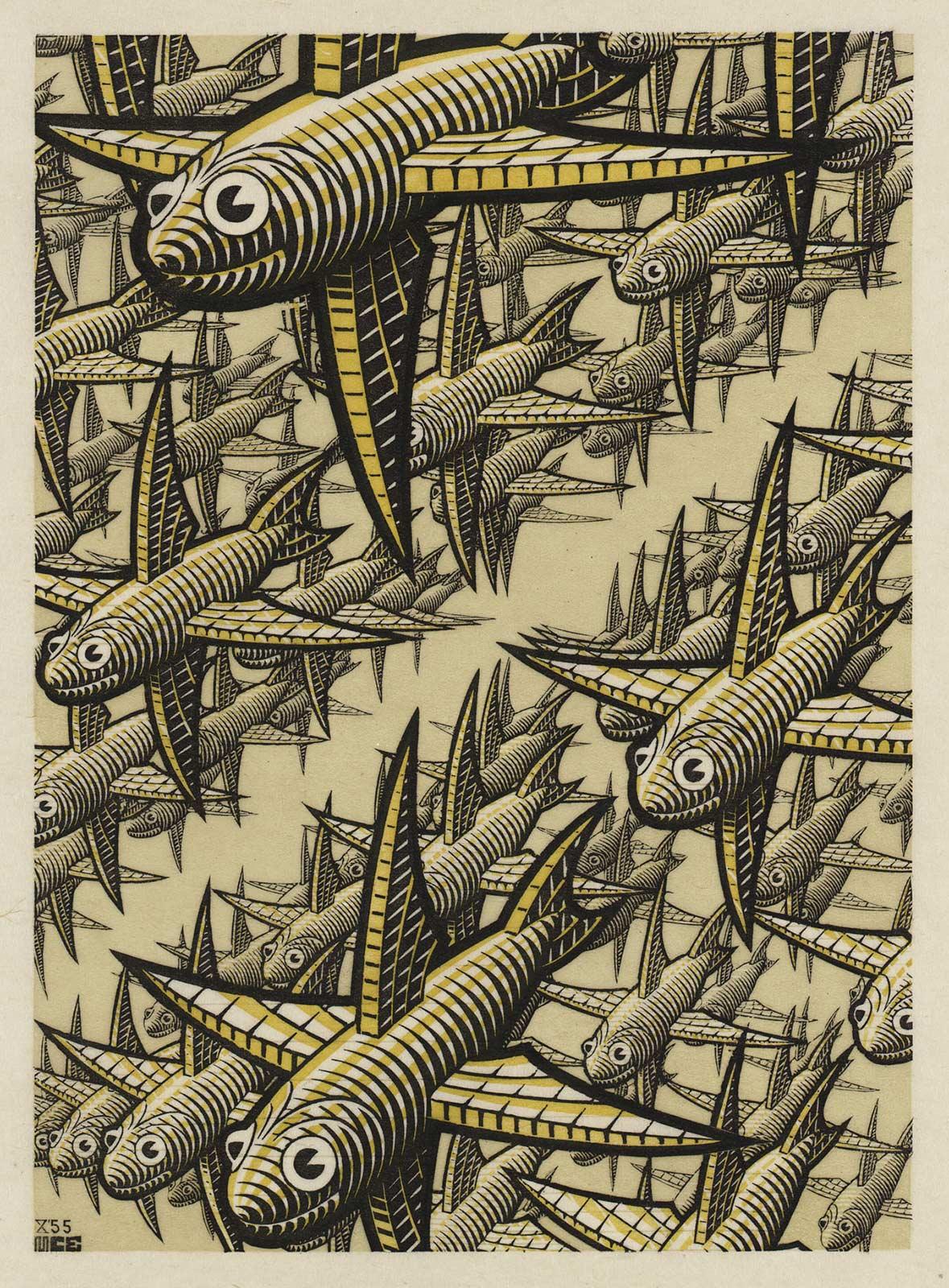

From 14 November to 14 December 1950 Escher had an exhibition in the Amsterdam gallery Le Canard. He was exhibiting there along with his fellow graphic artist Harry van Kruiningen. The invitation card was adorned with a vignette featuring little devils, a wood engraving that Escher had produced specially for the exhibition. He displayed graphic work and a hand-woven tapestry, as the card also shows.
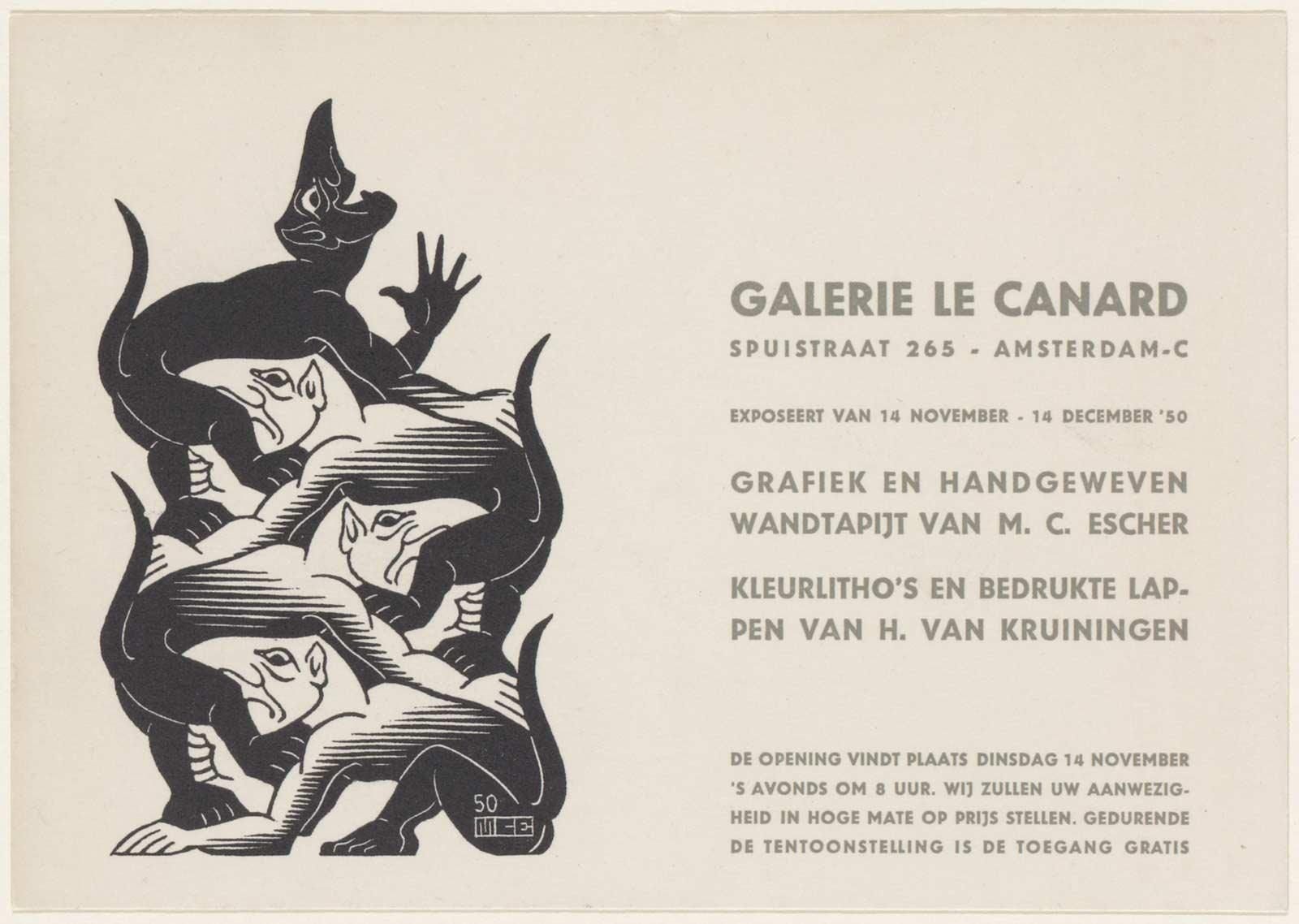
For the design of the vignette, Escher reverted to a figure that he had already experimented with in his sketchbooks: a sullen looking character with a huge nose and a stooped posture. In 1944 he produced a regular division drawing with only that figure, but he also produced a drawing in which he alternated between the figure and an optimistic variant. This tessellation was the starting point for the optimist and the pessimist in his lithograph Encounter. He reused the tessellation featuring only gruff-looking types for the vignette and in a New Year’s greetings card two years later. Because of their tails, they are also called devils. The remarkable thing about this vignette is that one of the four stacked devils escapes the norm. The bottom three stand stoically on each other, but the upper one reaches up and even has something of a smile that makes him seem to want to join his optimistic alter ego from Encounter.
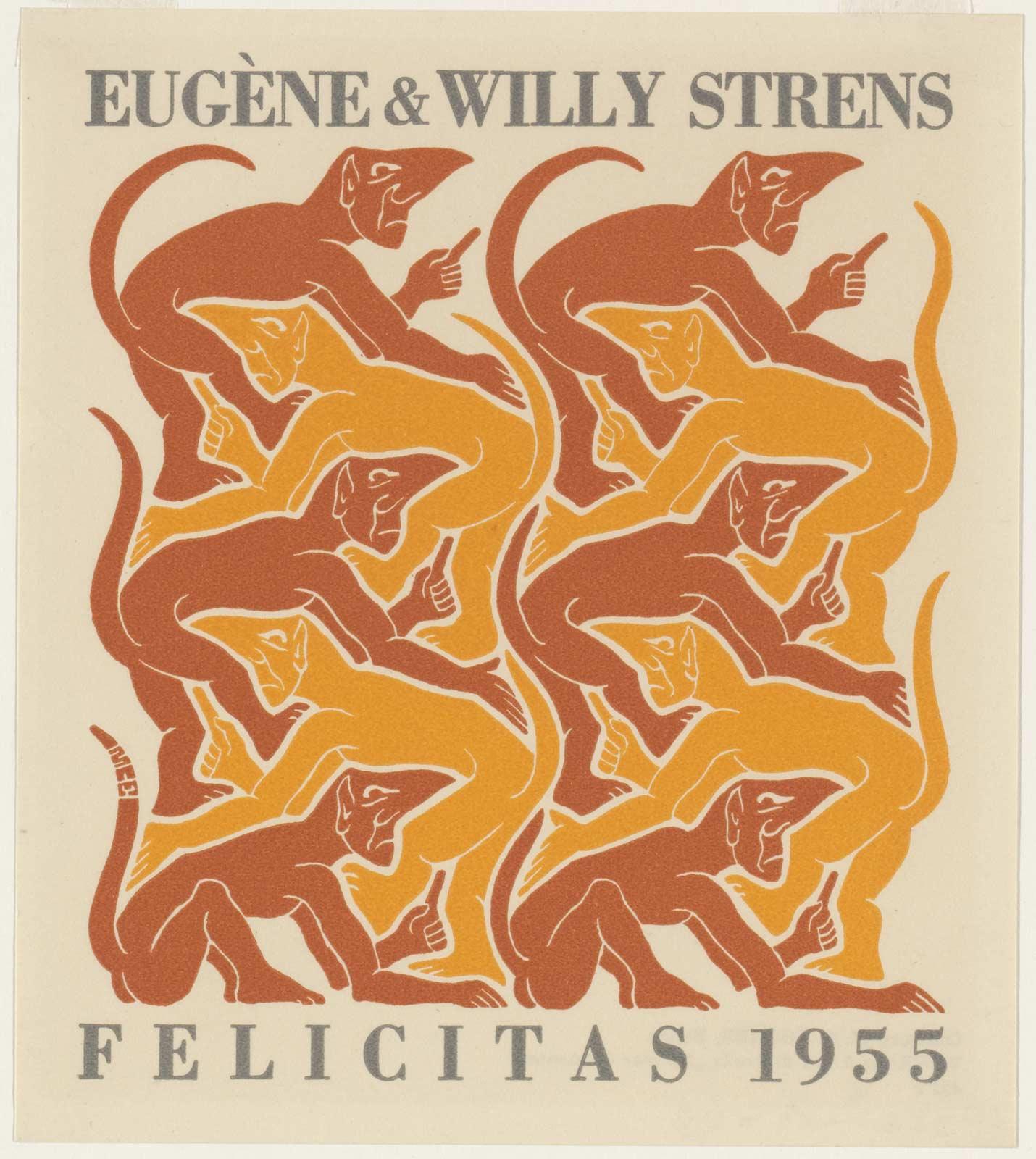
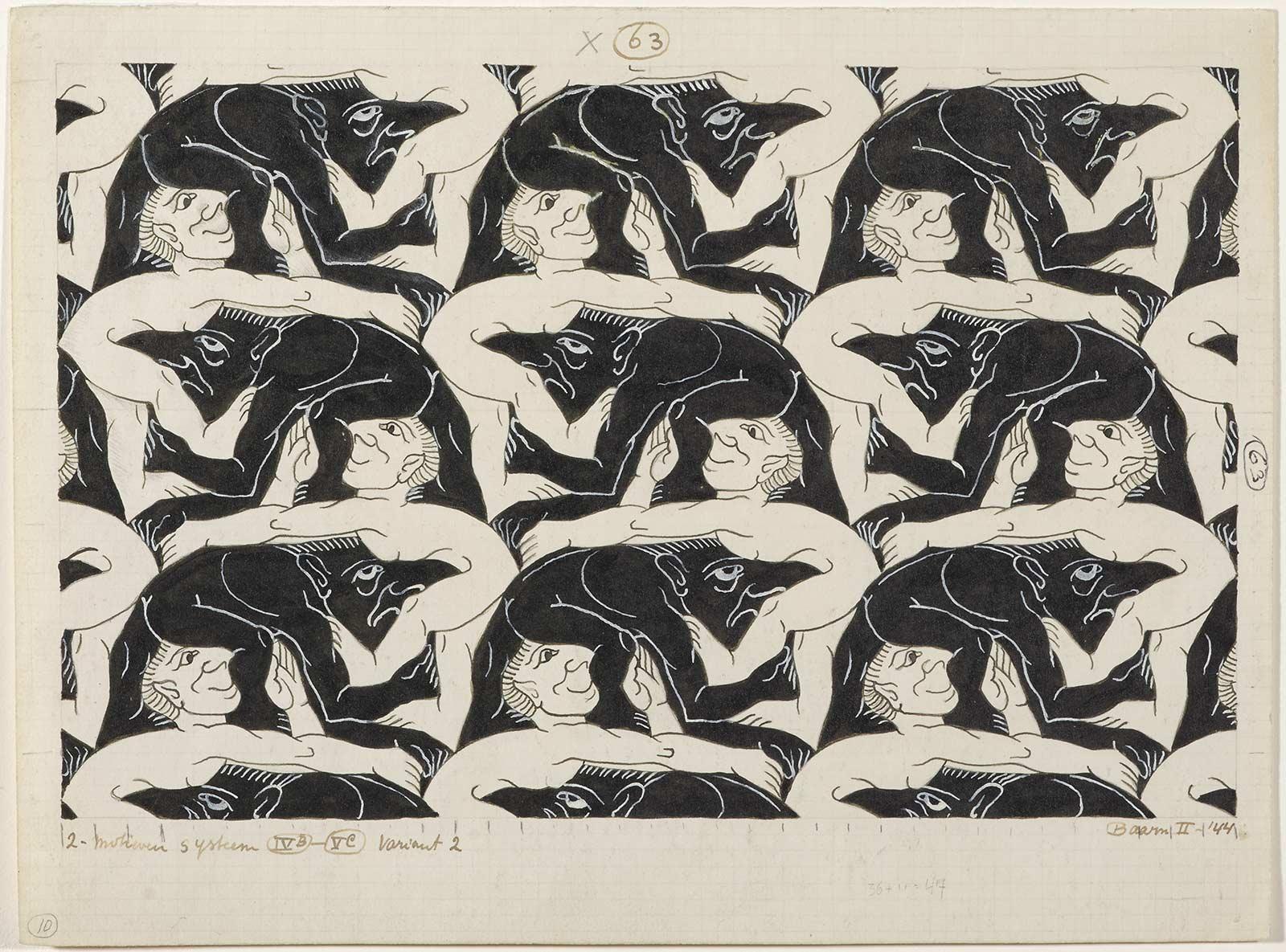
The fact that M.C. Escher exhibited at Le Canard was quite special. He was known as a serious, isolated and restrained graphic artist who had little interest in modern art movements such as Reflex and Cobra which emerged after the end of the Second World War. Le Canard was the place where these flamboyant artists met. This legendary gallery would become the headquarters of the Dutch avant-garde during its short-lived existence (1950-1957).
After the war, Hans Roduin opened the bookshop d’Eendt on Spuistraat. It was a second-hand bookshop, but he also sold the latest literature and magazines such as Braak, Reflex and Cobra. On the other side of the street, at no. 265, he opened Galerie Le Canard in 1950. In addition to the gallery, Le Canard was also a lively club. In the seven years of its existence, it was a hive of activity. There were presentations by poets, jazz concerts and performances by modern composers. The ‘Amsterdam Filmliga’ used it for its film screenings and there was room for mime, a puppet theater, a magician, lectures on philosophy and politics or a guest appearance by a celebrity such as sitar player Ravi Shankar.
But it was primarily an exhibition platform and meeting place for contemporary artists. Consider in this regard Cobra painters such as Constant, Brands, Anton Rooskens and Theo Wolvencamp as well as contemporaries such as Lotti van der Gaag and Ger Langeweg. Armando had his first solo exhibition here in 1954. During Le Canard au soir ‘Vijftigers’ (members of the ‘Fifties’ group of writers) Campert, Elburg, Andreus, Lucebert and Schierbeek gave readings. Journalist H.J.A. Hofland was a regular visitor. If you wanted to know anything about the latest developments in art back then, this was the place to be.
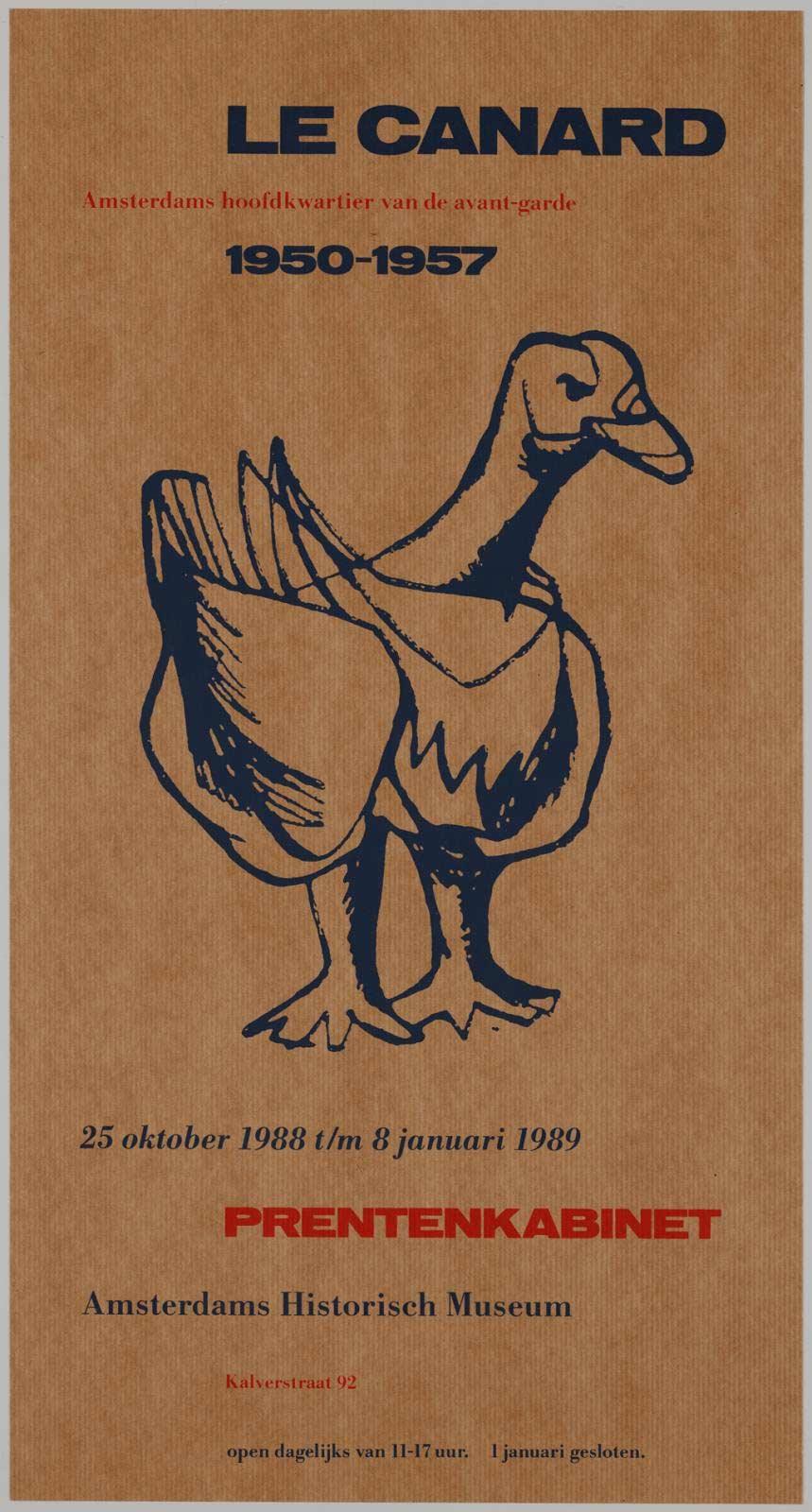
And it was here, in the gallery’s early days, that the cerebral outsider Escher exhibited. Perhaps it helped that he did so along with Harry van Kruiningen, whose work was considered more modern and enjoyed greater acceptance on the part of fans of modern art. It was not the first time that the graphic artists had held an exhibition together. A year earlier they could be seen with colleague Wout van Heusden in Museum Boijmans van Beuningen. Thereafter, the three exhibited together several times and also gave talks about their work. They exhibited as a foursome with graphic artist and art critic J.M. Prange in 1952 and in 1956 Harry Disberg joined them.* Escher also exhibited in other combinations with members of ‘De Grafische’ on several occasions in the 40s, 50s and 60s.

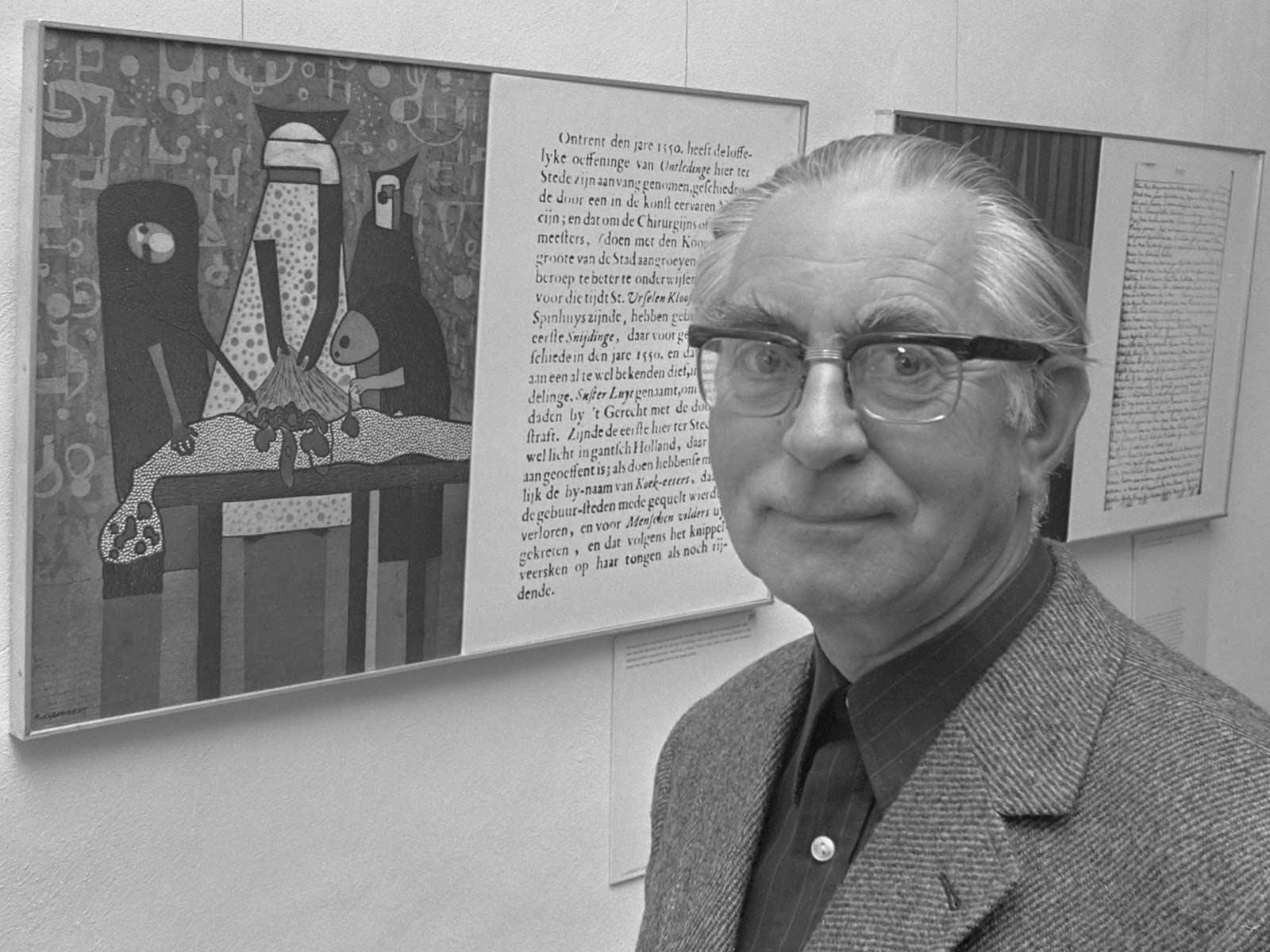
In a letter to his friend Bas Kist of 16 October 1949, Escher wrote about Harry van Kruiningen:
'He is a simple Amsterdam boy who makes surprisingly clever and beautiful colour lithographs. In addition, as far as I suspect, he doesn’t have much and I would like to grant him a benefit. He is a plain-speaking chap (he is, among other things, the very active and competent secretary of our graphic circle, and not without a lively sense of humour) and you would certainly be able to spend a very enjoyable evening with him. Although his work is very modern, abstract almost, the conservative members of your company could only benefit from this.'**
Sources
[*] Wim Hazeu, M.C. Escher, Een biografie, Meulenhoff, 1998, p. 320, 370
[**] Wim Hazeu, M.C. Escher, Een biografie, Meulenhoff, 1998, pp. 322.
More Escher today

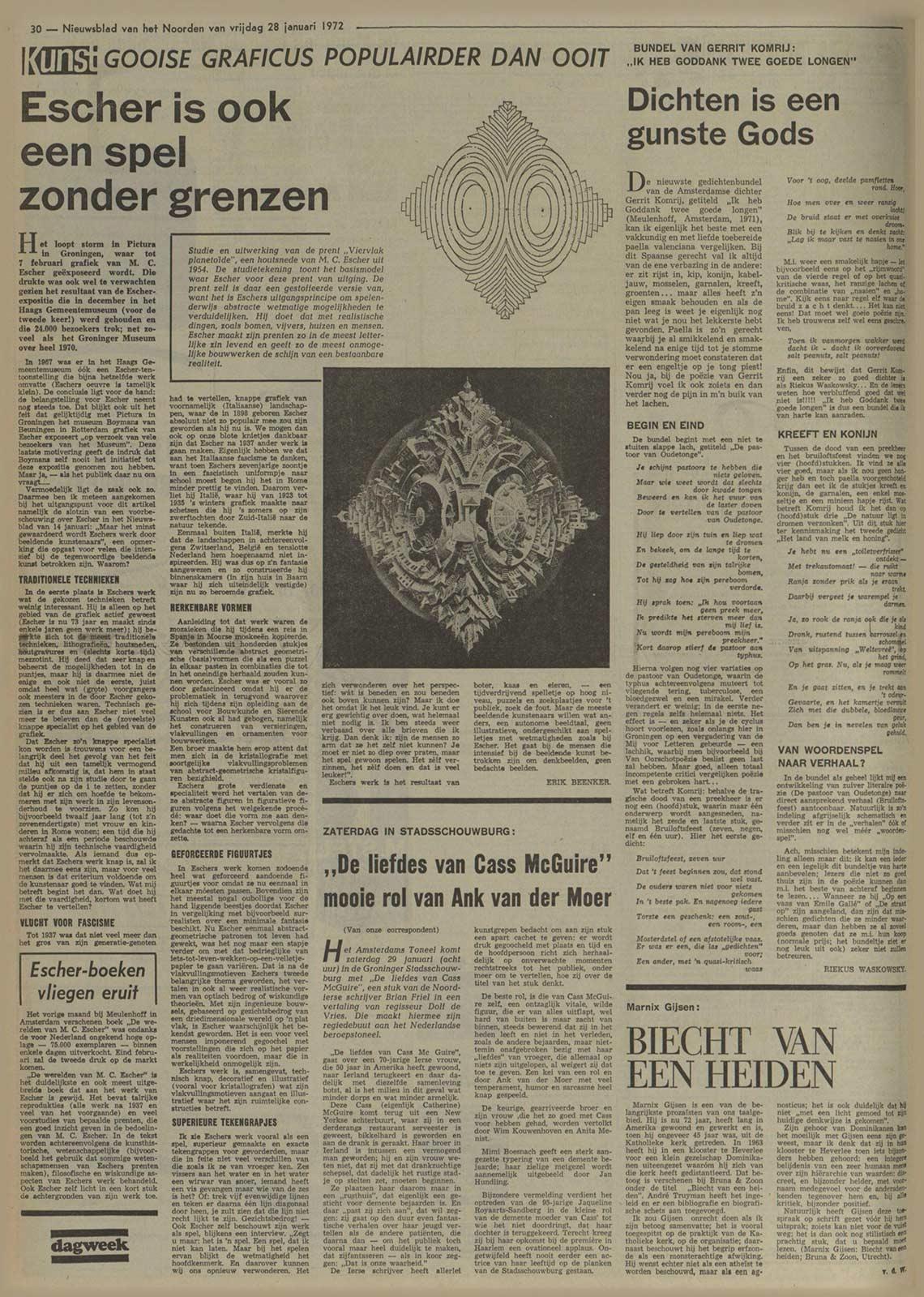
Escher versus art criticism
